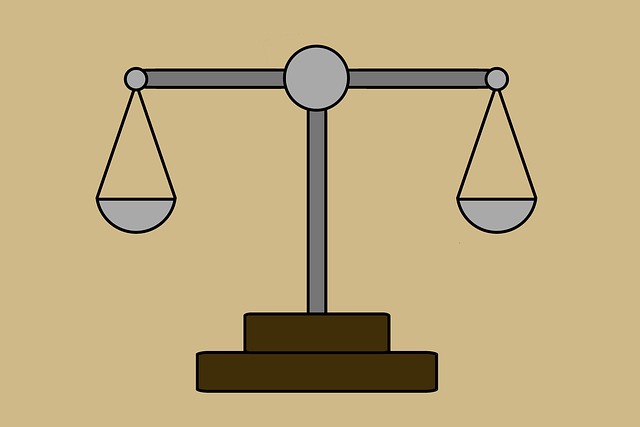Oregon's Child Welfare Court System is a structured network dedicated to protecting and supporting vulnerable children, navigating legal complexities with fairness for all stakeholders. Initiated by petitions alleging dependency, the process involves CWS investigations, temporary custody, family assessments, hearings, and case plans culminating in reunification, adoption, or foster care. Key participants include caseworkers, judges, attorneys, foster caregivers, and social workers, collaborating to follow the comprehensive child welfare court guide. Parents and guardians have defined rights, including legal representation, to ensure due process. Post-court actions focus on implementing orders, providing support plans, and connecting families with community resources for continuous care.
“Uncovering Oregon’s Child Welfare Court Process: A Comprehensive Guide. This article serves as a beacon for understanding the intricate journey through Oregon’s child welfare system. From initial petitions to post-court support, we demystify eligibility criteria, legal processes, and the roles of key stakeholders. Parents and guardians are empowered with knowledge on their rights and representations. Discover how this guide navigates the complex landscape, offering vital insights for all involved in child welfare court.”
- Understanding Oregon's Child Welfare Court System
- Eligibility Criteria for Involvement in Child Welfare Cases
- The Legal Process: From Initial Petition to Court Hearing
- Roles and Responsibilities of Key Stakeholders
- Rights and Representations for Parents and Guardians
- Post-Court Actions and Ongoing Support for Children and Families
Understanding Oregon's Child Welfare Court System

Oregon’s Child Welfare Court System plays a crucial role in protecting and nurturing vulnerable children within the state. This system is designed to ensure the safety, well-being, and permanency of youth who have been abused or neglected. The process begins when a petition is filed with the court, alleging that a child is dependent and in need of protection. This petition triggers an investigation by Child Welfare Services (CWS), which assesses the family’s situation and determines the child’s placement needs.
The court guide for this process is comprehensive, outlining every step from initial assessment to final dispositions. It navigates complex legal terminology, ensuring fairness and due process for all involved, especially the child. This guide provides clarity on various court interventions, such as temporary custody orders, case plans, and potential outcomes like reunification, adoption, or foster care placement. Understanding this system is essential for parents, guardians, advocates, and anyone interested in Oregon’s efforts to support at-risk youth.
Eligibility Criteria for Involvement in Child Welfare Cases

In Oregon, child welfare cases are initiated when there’s a reason to believe a child is at risk or has experienced abuse or neglect. The eligibility criteria for involvement in these cases is established by state laws and guidelines. Key factors include reports from concerned individuals, such as teachers, neighbors, or healthcare providers, who observe signs of harm or neglect. Additionally, law enforcement investigations, social worker assessments, and court orders can trigger child welfare involvement.
The Oregon child welfare court guide outlines specific eligibility criteria for various stakeholders – parents, guardians, foster care providers, and other interested parties. It emphasizes the importance of timely reporting suspected maltreatment to ensure prompt intervention and support for affected children and families. This process is designed to protect vulnerable youth while also offering resources and services to help keep families together whenever possible.
The Legal Process: From Initial Petition to Court Hearing

The legal process in Oregon’s child welfare court begins with an initial petition, filed by a concerned individual or agency, alleging that a child is at risk and requires protection. This document outlines the specific concerns, providing crucial details about the child’s circumstances and the alleged risks. Once filed, the petition triggers a series of steps designed to ensure the child’s safety and well-being. The court then issues an order for temporary custody, allowing child welfare services to temporarily take over the care of the child while the case is in progress.
The next phase involves a comprehensive assessment of the family and the child by social workers and other professionals. This process includes interviews, home visits, and evaluations to gather essential information. Key decisions are made during this stage, such as determining the appropriate placement for the child, whether it’s with relatives, foster care, or a group home. The court hearing is a critical milestone where evidence is presented, witnesses testify, and both the petitioners and the parents/guardians have an opportunity to share their perspectives. This open forum aims to ensure fairness and inform the judge’s decision on the child’s future welfare.
Roles and Responsibilities of Key Stakeholders

In the Oregon child welfare court process, various stakeholders play crucial roles and bear significant responsibilities to ensure the best interests of the child are upheld. The court guide emphasizes the importance of each participant’s active involvement for a successful outcome. One key stakeholder is the child welfare caseworker, who investigates and assesses family situations, develops plans for safe care, and represents the child’s interests in court. They work closely with the judge, who makes decisions regarding custody, placement, and services based on the evidence presented. The judge also oversees the progress of the case, ensuring all parties adhere to the established plan.
Additionally, attorneys for both the parents/guardians and the child play integral parts. They advocate for their clients’ rights while guiding them through the legal process. These attorneys ensure that all legal options are explored and presented effectively to the court. Other stakeholders include foster caregivers, who provide temporary homes and support for children in need, and social workers, who assist with case management and service coordination. Together, these individuals collaborate to navigate the child welfare court guide, ultimately striving to secure a safe and stable environment for vulnerable youth.
Rights and Representations for Parents and Guardians

In Oregon’s child welfare court process, both parents and guardians have specific rights and the right to representation during proceedings. Understanding these entitlements is crucial for navigating the child welfare court guide effectively. According to state laws, individuals involved in foster care or adoption cases can seek legal counsel, ensuring their interests are protected throughout the process. This representation may include attorneys specializing in family law or appointed guardians ad litem who advocate for the child’s best interests.
The rights of parents and guardians extend to being informed about case developments, attending court hearings, and participating actively in decisions affecting their children. They have the opportunity to present evidence, question witnesses, and make legal arguments on their behalf. These rights are designed to ensure fairness and due process while guiding parents and guardians through the complexities of the child welfare court system.
Post-Court Actions and Ongoing Support for Children and Families

After a case has been resolved in Oregon’s child welfare court, various post-court actions are taken to ensure the well-being and stability of the child and family involved. This includes implementing the court orders and creating a plan for ongoing support. The primary focus is on providing resources and services that promote safe and healthy environments for children, particularly those who have experienced trauma or instability.
The child welfare court guide emphasizes the importance of continuous care, which may involve regular check-ins with case managers, therapists, or other support service providers. This ensures that any emerging issues are addressed promptly, and the family receives the necessary assistance to maintain custody or work towards reunification. Additionally, community resources, such as housing programs, educational support, and mental health services, play a crucial role in helping families thrive post-court.
